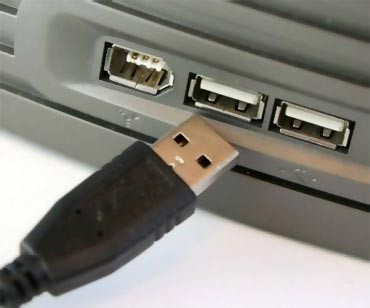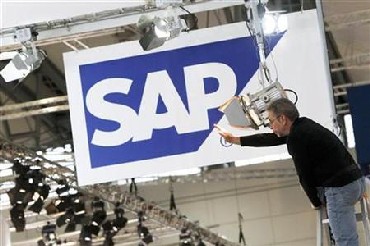 | « Back to article | Print this article |
Why corporates don't rely on gut feelings anymore
Sagar Bhonsle, a college student from Bhayanadar in Mumbai, loves watching videos on YouTube and downloading movie clips on his laptop. It keeps him entertained during the hour-long travel to his college in Andheri.
He uses a USB dongle to access the internet, with a Rs 999 unlimited data plan service, MBlaze, from telecom services provider MTS India (formerly known as Sistema Shyam Teleservices).
Since he is "satisfied with the service", he was surprised when the company suggested given his heavy usage pattern, it was willing to offer him a cheaper data plan, with the same speed.
The company had called despite the fact that Sagar did not approach the company's customer care department. MTS India users like Bhonsle would soon not only get such calls from the company, but also be able to have their data plans changed instantly.
But how did MTS India know Bhonsle's usage pattern so well, and how would it be able to ensure the plans are changed immediately, given the process usually takes a few hours to a day.
Click NEXT to read more...
Why corporates don't rely on gut feelings anymore
Rajeev Batra, chief information officer, MTS India, attributes the dynamics to a 'business intelligence' software solution from SAP, which the company implemented last year.
Based on this solution, the company would soon be launching 'M Bonus'- a programme that allows it to introduce plans on-the-fly to customers based on their usage patterns throughout the country.
MTS' overall subscriber base is 12 million, of which over 800,000 use its data services. The company plans to increase the base of data users.
In India, decision-making has historically been based either on 'gut feelings' or on the business experience of managers.
Click NEXT to read more...
Why corporates don't rely on gut feelings anymore
Business intelligence (BI) would allow enterprises to make more fact-based decisions. BI solutions comprise a set of tools and techniques that store, extract, analyse and provide access to data that allows business executive to make real-time business decisions.
As technology has progressed, the new generation technology has compressed the time to analyse data from a few days to a few minutes, thus providing access to information to business leaders on real-time basis.
BI is an application layer that sits atop core IT systems such as core banking or enterprise resource planning systems.
The application promotes revenue growth and faster innovation through shorter product and service life cycles and the ability to find where value is being created in the business.
"The telecom landscape in India is pretty competitive, and it is a challenge to keep your average revenue per user rising. On the other hand, the information that we get on a regular basis is huge. There are field reports, VAS data and calling patterns of customers. All this needs to be analysed in real-time for executives to take a knowledgeable decision," explains Batra.
Click NEXT to read more...
Why corporates don't rely on gut feelings anymore
He adds the use of BI becomes crucial for telecom players, primarily due to the customer base.
"In the first year of our operations, we had hit a subscription base of three-four million. By the end of the first year, we had to start looking for a technology platform that could help us get insight into the customers' mindshare."
Since the implementation of SAP's BI tool, Batra and his team can generate over 1,000 reports on a daily, a weekly or a monthly basis.
"Over and above this, the reports are available in a dash-board format to executives on their handsets," adds Batra.
MTS India is not the only such case. Telecom companies such as Bharti Airtel, Vodafone and Reliance Communications also use the BI platform. Airtel has been using BI for a few years.
Click NEXT to read more...
Why corporates don't rely on gut feelings anymore
Other than using it to understand individual usage patterns of users, Airtel's management has moved from an observation to a predictive model.
This is not true only for consumer-facing firms like telcos, but also for heavy engineering firm Larsen and Toubro (L&T).
The Rs 3,850-crore (Rs 38.50-billion) electric and automation business of L&T Group opted for a BI implementation for reliable presentation of information or as the company said, "To have a "single version of the truth."
The electrical & automation business of L&T has multi-location operations Before the implementation, each line manager had his own method and a set of data for measuring performance in his area and controlling the process.
Click NEXT to read more...
Why corporates don't rely on gut feelings anymore
The disadvantage of this approach was that the user was relying on their version of data. A single version of the fact was not available and the key performance indicator used by each line manager was different.
Since the implementation of SAP BI in 2009, the business has developed about 200 analytical reports to address requirements and processes.
"This helps the business to be competitive and aids faster decision making. BI has helped to design processes for measuring market share, examining sales trends, consumer preferences and profitability on various parameters like domestic/exports market, segments, distribution channels, geographical locations and material segment," says S C Bhargava, senior vice-president and head, electric and automation, L&T.
Click NEXT to read more...
Why corporates don't rely on gut feelings anymore
Earlier, the time taken to gather data for a report was anywhere between two to four days. This has now come down to half-a-day to one day.
Maneesh Sharma, head (business analytics and technology group), SAP India, says, "Given the amount of data that each corporate is dealing with, analytics is becoming crucial. Other than trying to understand the 'what if' situation, firms are looking for real-time data crunching. Details are available in a few minutes."
The market for BI software in India is estimated to account for revenue of $65.4 million in 2011, up 15.7 per cent over 2010, according to Gartner.
The worldwide BI software market revenue is forecast to grow 9.7 per cent to reach $10.8 billion in 2011.
Bhavish Sood, research director at Gartner says the demand of the BI platform market in 2010 was defined by an intensified struggle between business users' need for ease of use and flexibility on the one hand, and IT's need for standards and control on the other.







